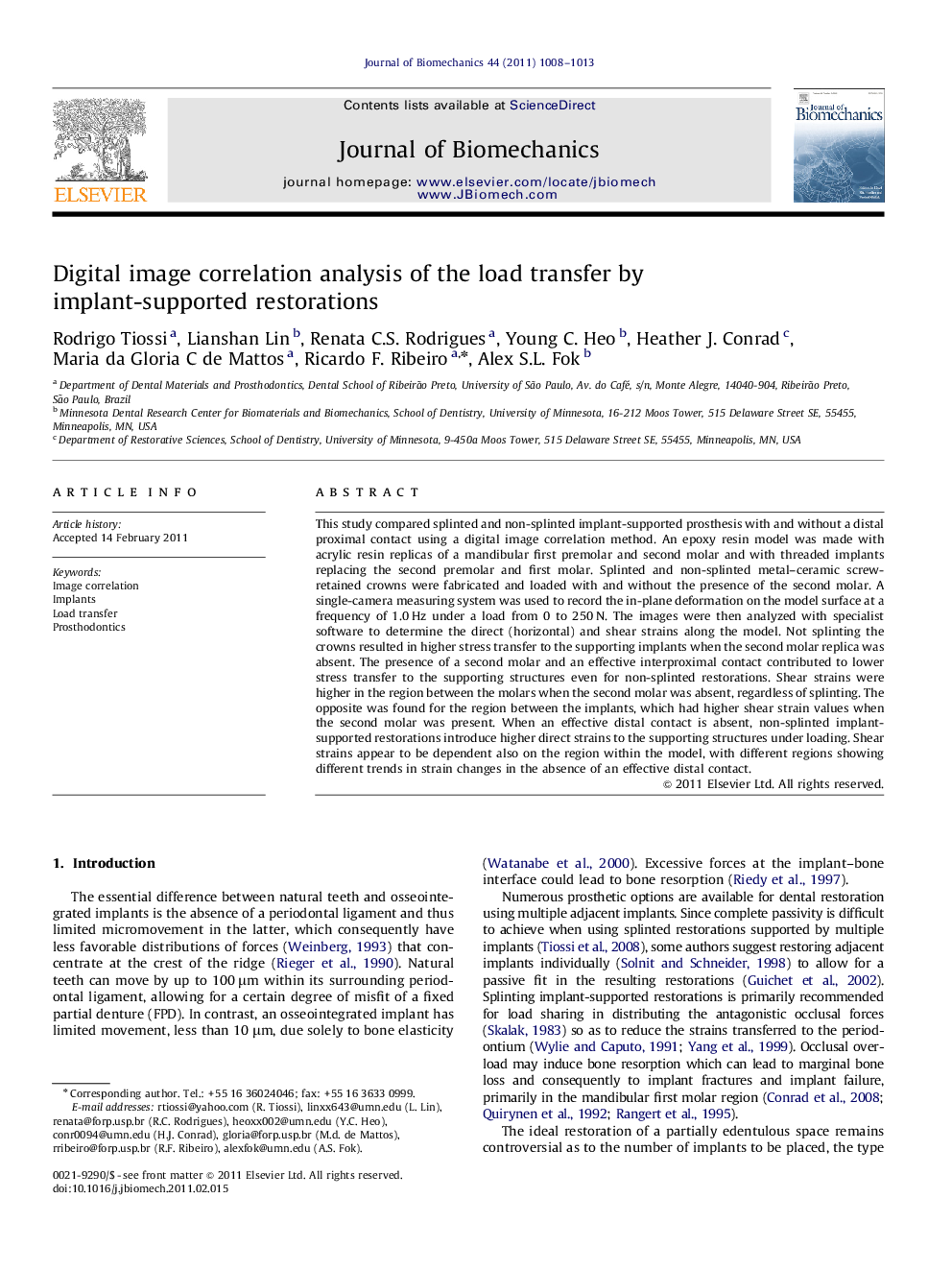| Article ID | Journal | Published Year | Pages | File Type |
|---|---|---|---|---|
| 10433348 | Journal of Biomechanics | 2011 | 6 Pages |
Abstract
This study compared splinted and non-splinted implant-supported prosthesis with and without a distal proximal contact using a digital image correlation method. An epoxy resin model was made with acrylic resin replicas of a mandibular first premolar and second molar and with threaded implants replacing the second premolar and first molar. Splinted and non-splinted metal-ceramic screw-retained crowns were fabricated and loaded with and without the presence of the second molar. A single-camera measuring system was used to record the in-plane deformation on the model surface at a frequency of 1.0Â Hz under a load from 0 to 250Â N. The images were then analyzed with specialist software to determine the direct (horizontal) and shear strains along the model. Not splinting the crowns resulted in higher stress transfer to the supporting implants when the second molar replica was absent. The presence of a second molar and an effective interproximal contact contributed to lower stress transfer to the supporting structures even for non-splinted restorations. Shear strains were higher in the region between the molars when the second molar was absent, regardless of splinting. The opposite was found for the region between the implants, which had higher shear strain values when the second molar was present. When an effective distal contact is absent, non-splinted implant-supported restorations introduce higher direct strains to the supporting structures under loading. Shear strains appear to be dependent also on the region within the model, with different regions showing different trends in strain changes in the absence of an effective distal contact.
Related Topics
Physical Sciences and Engineering
Engineering
Biomedical Engineering
Authors
Rodrigo Tiossi, Lianshan Lin, Renata C.S. Rodrigues, Young C. Heo, Heather J. Conrad, Maria da Gloria C de Mattos, Ricardo F. Ribeiro, Alex S.L. Fok,
